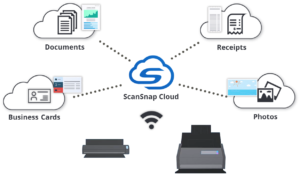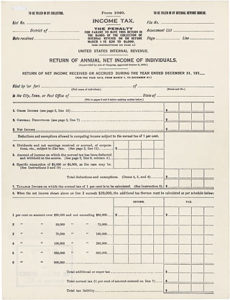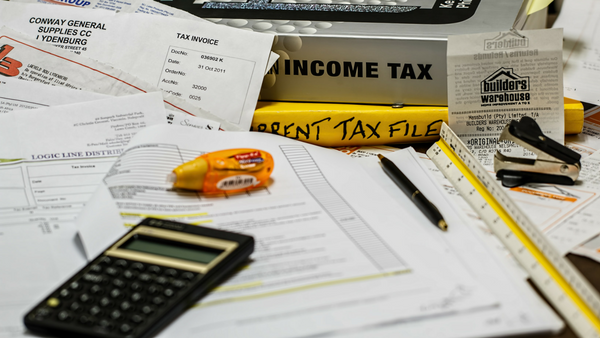Tax time is right around the corner, but are you ready? Paperless solutions for tax filing can help make this normally hectic time of the year easier and less stressful. As a small business owner or regular taxpayer, you may be trying to save money by doing all your own tax prep, but unless you’re extremely organized ahead of time, this can be challenging, to say the least.
Delays spent searching will cost you big bucks
Even if you have a CPA whom you trust, it can still be a nightmare sorting through a mountain of files and folders to give them all the information they need. Wasting precious time on things like that is enough to make any sane person crazy. The answer is to adopt a set of paperless solutions for tax time. Why?
Accountants work on an hourly basis and charge a premium price to prepare your taxes. They are not equipped to handle the task of organizing your financial papers in a cost-effective manner. From the moment you walk into their office, the clock is ticking and you are being charged for every minute. Any delays will cost you.
Save Money By Hiring a Professional Financial Organizer
If you want to save money for your business by claiming deductions and taking tax breaks, you need to raise the bar in terms of accuracy by making sure your expenses are right and tight. That means getting better organized.
As a professional financial organizer specializing in home office and small business organizing, I frequently get asked this time of year to help my clients, both small business and personal, prepare tax documents for their accountants. I love this part of my work, as I show them how to create paperless solutions for tax time.
From bags of receipts to a simple worksheet
 Several of my clients keep all their tax-deductible receipts in boxes or even shopping bags around their homes. Oftentimes, tax documents and receipts are mixed up with junk mail and other non-tax documents. For me, it’s like a treasure hunt to go through all the paper to find and separate out what is relevant for taxes. Many of my older clients have high out of pocket medical expenses, which are often tax deductible. Using my Fujitsu ScanSnap scanner, I scan any medical expenses not covered by insurance, and convert the information into a spreadsheet. I can categorize everything that is tax related according to a schedule C, or by the correct medical expense category, and put it into a worksheet to give to the client’s accountant.
Several of my clients keep all their tax-deductible receipts in boxes or even shopping bags around their homes. Oftentimes, tax documents and receipts are mixed up with junk mail and other non-tax documents. For me, it’s like a treasure hunt to go through all the paper to find and separate out what is relevant for taxes. Many of my older clients have high out of pocket medical expenses, which are often tax deductible. Using my Fujitsu ScanSnap scanner, I scan any medical expenses not covered by insurance, and convert the information into a spreadsheet. I can categorize everything that is tax related according to a schedule C, or by the correct medical expense category, and put it into a worksheet to give to the client’s accountant.
Paperless Solutions for Tax Time for Risk-Averse Clients
While many of my clients are comfortable with scanning and saving their tax documents on their computer and using a cloud-based backup like Dropbox or Box, others are very nervous about trusting their information to the cloud. For them, I review their tax-deductible expenses on a regular basis, scanning any receipts and create files or an Excel spreadsheet that gets saved on their computer’s hard drive. This works just fine – as long as they manually back up their computer regularly!
If you are a small business owner and think you might be ready to go paperless for taxes, here’s my 5 Step Plan to get started.
Your 5 Step Paperless Solution for Tax Time
1. Create an electronic folder on your computer in called Taxes (Year) and a corresponding physical file folder in an easy to locate place, like your desktop or front of a close-by file drawer. Put all tax documents directly into the paper folder as they come in the mail, and download any tax documents that are sent to you electronically into the digital Taxes folder.
2. Think about investing in a dedicated document scanner like a Fujitsu ScanSnap that will give you multi-sheet scanning capability in a compact space with one-button ease of operation. As you collect expense receipts during the tax year, scan and save them immediately into an online folder named “Business Expense (Year)” for backup in case the IRS requests it. The IRS has accepted scanned versions of receipts since 1997, according to Revenue Procedure 97-22). I suggest that you sub-divide your expenses into the same categories used by the IRS. For example: Meals, Supplies, Parking, Contractors, etc. If you get receipts by email, save them as PDFs (please don’t print and then scan them again!) and file them in the folders as described above.
3. Consider using the specialized software ScanSnap Receipt that comes with every ScanSnap. It can extract critical data like the vendor, date, category, and amount spent from every receipt you scan. You can then export the data into a spreadsheet format. That data can be saved and used to track spending by category for your Schedule C.
4. For automated tracking, use an online bookkeeping software or app – like the free app Everlance – to keep track of your income and expense items throughout the year. Or you can use a more comprehensive solution like Quickbooks or GoDaddy Bookkeeping. Make sure also to keep track of the miles you drive for business, as those are deductible as well.
5. If your tax preparer is paperless too, share your Taxes folder with them on a secure online file sharing system like Dropbox or Box – no need to send shoeboxes of receipts! Your preparer will only see the data that you choose to share with them, and nothing else. And many CPAs now have their own secure portals to upload tax information too.

There you have it. The stark reality is that April 15 is almost here and you need a plan now. I won’t dispute that getting ready for your taxes can be a daunting task – it is. But now with so much technology at your fingertips, you don’t have to feel so overwhelmed.
Are you ready to adopt paperless solutions for tax time? The next move is yours: for more information on my paperless solutions for tax time and more of my services, visit my Paperless Office Organizing web page.


